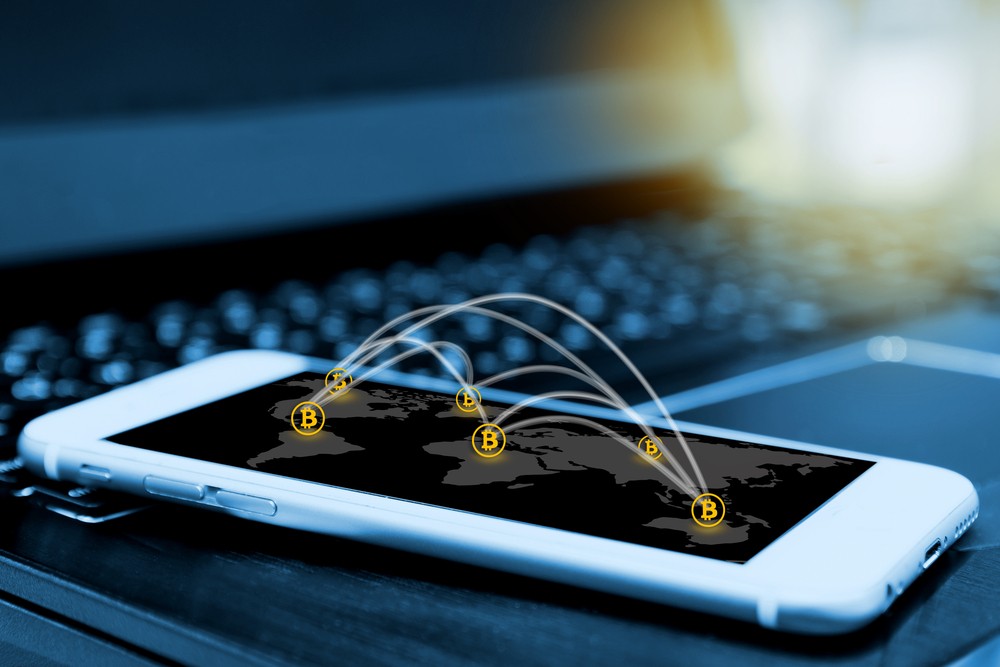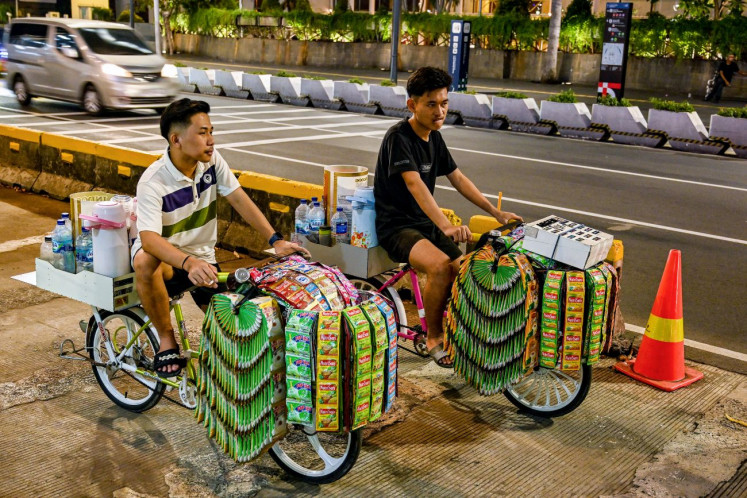Popular Reads
Top Results
Can't find what you're looking for?
View all search resultsPopular Reads
Top Results
Can't find what you're looking for?
View all search resultsBlockchain — What's in it for the global goals?
We still can’t trust others online when transacting, as the internet was created to move information, not value.
Change text size
Gift Premium Articles
to Anyone
T
rust and money, two age-old concepts that keep the economic wheels turning, are at the dawn of fundamental change — on a scale we haven’t seen before.
The internet has reduced the costs of searching, collaborating and exchanging information and virtually turned the world into a global village. Yet, as Peter Steiner says in his famous cartoon: “On the internet, nobody knows you’re a dog.” We still can’t trust others online when transacting, as the internet was created to move information, not value. That’s where third parties, such as financial services providers, governments and tech companies, come in.
Although intermediaries do a great job resolving the trust issue, relying on them has become incredibly inefficient, leading to risks, decreased speed, increased costs — and sometimes even fraud. Blockchain can solve this by making a network responsible for establishing trust, as opposed to centralized intermediaries, and giving them the tools, mass collaboration and clever code to do so. This could reduce our dependence on third parties and significantly improve efficiency.
The original use of blockchain was to store and track cryptocurrency transactions. However, new initiatives to benefit society more broadly are emerging. They include the establishment of secure digital identities, the fight against corruption, land registry and the coordination of food deliveries.
As such, some of these initiatives can be used to support the United Nations’ Sustainable Development Goals (SDGs) in innovative ways.
The SDGs cover a broad range of social and economic development issues. Although plenty of organization are targeting the SDGs, achieving it will cost a tremendous amount of effort, which is not merely about financing, but also about the strategies that should be employed.
Recent estimates released by the World Bank reveal that more than 1 billion people live on less than US$1.90 a day. These people’s ability to escape poverty is strongly affected by several factors, and financial inclusion happens to be one. One of the biggest gaps for the SDGs success is simply a lack of access to resources and funding. According to a report by the UN Development Program, “$1.4 trillion a year is needed to reach global goals for the world’s poorest”.
At this moment, billions of individuals are unbanked for a variety of reasons. While a large portion of the world’s population may not have proper access to financial services, smartphone penetration rates are increasing. In some countries, more people have mobile phones than clean drinking water, electricity and/or toilets.
By leveraging blockchain technology, those without a formal identification could have an opportunity to obtain a digital identity, straight from their mobile phones. In combination with cheaper blockchain-powered remittance services, low-income individuals and households can be enabled to save and lend more.
Ant Financial for example, an Alibaba subsidiary, is trialing blockchain remittances in tandem with Standard Chartered and GCash, whereas Sovrin and uPort are attempting to establish and manage digital identities by deploying blockchain technology.
As stated by the UN’s Food and Agriculture Organization (FAO), “roughly one third of the food produced in the world for human consumption every year, approximately 1.3 billion tons, gets lost or wasted”. That’s a staggering amount. Consumer behavior plays a big role. However, the study also discovered a lack of coordination between actors in the food supply chains as a major contributing factor. Most companies still keep records about their products in closed databases, or even on paper.
According to the IBM Food Trust initiative, leveraging blockchain technology could create more efficient food supply chains, cut costs, improve shelf-life management and help reduce food waste.
The World Food Program (WFP), the food assistance agency of the UN, distributes 3.5 million tons of food assistance annually to 90 million people in 80 countries. This is happening through a large physical and highly complex supply chain. The WFP is currently researching and exploring how to benefit from blockchain technology for the traceability and optimization of their physical assets.
Besides handing out food, the WFP increasingly hands out cash or vouchers to those in need, so they can buy food for themselves. Especially when food is available on the local market, but too expensive for the poorest to buy, cash and vouchers offer a solution without distorting the local economy.
Yet, this creates certain fraud and security risks and requires costly intermediaries. Blockchain could play a major role in solving this.
That is why the WFP ran a pilot project named Building Blocks in the Jordanian refugee camp of Azraq, where 10,000 refugees redeem their digital vouchers and pay for their food through a blockchain-based system.
The results are positive. It enabled the WFP to improve the security, increase the privacy of the beneficiaries, reduce the possibility of risks and put every Jordanian dinar that was saved on transaction fees in the hands of the refugees. The next phase of the pilot project aims to provide support to all of the 500,000 Syrian refugees in Jordan.
The abovementioned initiatives are just a few examples of the benefits the use of blockchain can create. There are more projects out there and possibilities beyond our imagination. Seizing them, however, will not happen overnight.
Blockchain technology could pave the way for the world’s progress on realizing the SDGs, which requires both macroeconomic and microeconomic approaches. However, one thing to be noted is that blockchain is not a singular solution.
Collaborative efforts between stakeholders, in combination with the use of other technological advancements, are central to the SDGs realization.
***
Badreddine Tazrouti is a blockchain specialist and trainer based in the Netherlands. Namira Samir is a research fellow at Bank of Indonesia. All the views expressed are personal.











